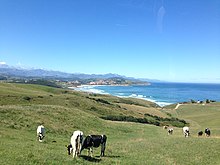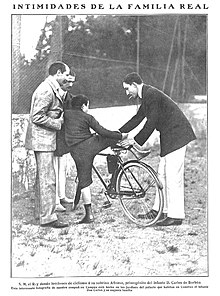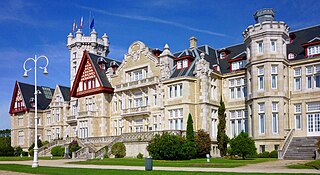
Santander is the capital of the autonomous community of Cantabria, Spain. It has a population of 172,000 (2017). It is a port city located in the northern coast of the Iberian Peninsula, facing the Cantabrian Sea.

Marbella is a city and municipality in southern Spain, belonging to the province of Málaga in the autonomous community of Andalusia. It is part of the Costa del Sol and is the headquarters of the Association of Municipalities of the region; it is also the head of the judicial district that bears its name.

Casa Vicens is a modernist building situated in the Gràcia neighbourhood of Barcelona. It is the work of architect Antoni Gaudí and is considered to be his first major project. It was built between 1883 and 1885, although Gaudí drew up the initial plans between 1878 and 1880. The work belongs to the orientalist style, similar to Neo-Mudéjar architecture, although interpreted in Gaudí’s own personal way, with a uniqueness that only he knew how to add to his projects. In this work, and for the first time, Gaudí outlined some of his constructive resources that would become regular features throughout the emergence of Modernisme. The work was widely discussed when it was built and caused a great sensation among the general public at the time. When the building was constructed, Gràcia was still an independent urban nucleus of Barcelona; it had its own council and was classified as a town, though nowadays it is a district of the city.
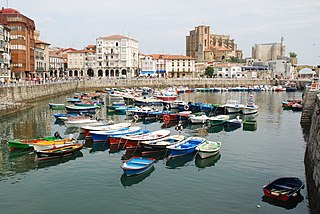
Castro Urdiales is a seaport of northern Spain, in the autonomous community of Cantabria, situated on the Bay of Biscay. Castro Urdiales is a modern town, although its castle and the Gothic-style parish church of Santa María de la Asunción, date from the Middle Ages. Its chief industries are tourism, fishing, and oil-packing of fish, especially sardines and anchovies. The Lolin and La Castreña anchovy canning factories serve as a reminder of the town's closeness to this industry and its proximity to the sea.

Eusebi Güell i Bacigalupi, 1st Count of Güell was a Catalan entrepreneur who profited greatly from the industrial revolution in Catalonia in the late 19th century. He married Luisa Isabel Lopez y Bru, daughter of Antonio López y López, 1st Marquis of Comillas and notorious slave trader, in 1871, and the couple had ten children. One of Güell's daughters, Isabel Güell i López, became a noted composer.
Neo-Mudéjar is a type of Moorish Revival architecture practised in the Iberian Peninsula and to a far lesser extent in Ibero-America. This architectural movement emerged as a revival of Mudéjar style. It was an architectural trend of the late 19th and early 20th centuries that began in Madrid and Barcelona and quickly spread to other regions in Spain and Portugal. It used Mudéjar style elements such as the horseshoe arch, arabesque tiling, and abstract shaped brick ornamentations for the façades of modern buildings.
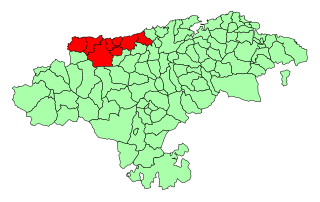
The Western Coast of Cantabria is a comarca of said Spanish autonomous community which comprises the municipalities of Val de San Vicente, San Vicente de la Barquera, Valdáliga, Comillas, Udías, Ruiloba, Alfoz de Lloredo and Santillana del Mar.

Joan Martorell i Montells was a Catalan architect and designer. He was an uncle of the architect Bernardí Martorell i Puig.
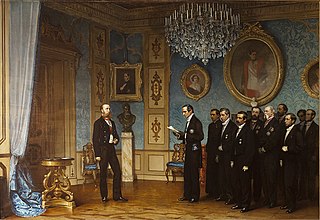
The Mexican nobility were a hereditary nobility of Mexico, with specific privileges and obligations determined in the various political systems that historically ruled over the Mexican territory.

Compañía Transatlántica Española, S.A., also known as the Spanish Line in English, was a passenger ocean line that has largely ceased operations although it still exists as a company. It is popularly known as "La Trasatlántica" in the Spanish language.
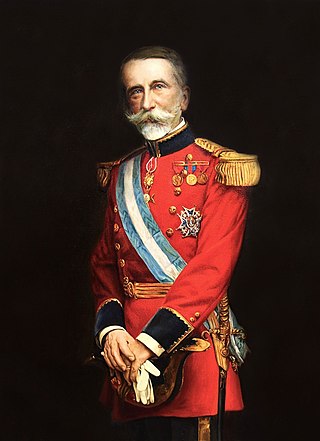
Claudio López y Bru, 2nd Marquess of Comillas, GE, was a Spanish peer, businessman, and immensely rich shipping magnate and landowner. He inherited the companies his father Antonio López y López had founded.

The Comillas Foundation is a private nonprofit organization based in the town of Comillas, Cantabria, Spain. Comillas Foundation, established in 2005, is dedicated to promote Spanish language and Hispanic culture. The academic activities of Comillas Foundation are developed through the International Center for Higher Spanish Studies (CIESE-Comillas), associated to the University of Cantabria. Besides that, the foundation provides forums and seminars related with Spanish language and culture.

The Royal Palace of Pedralbes is a building placed in the middle of an ample garden in the district of Les Corts, in Barcelona. From 1919 until 1931 and since 1975 it has been the official residence for the Spanish royal family when they visit the city, although they currently prefer the Palace of Albéniz. It also houses the Ceramic Museum, the Textile and Clothing Museum and the Decorative Arts Museum, both part of the Disseny Hub Barcelona and is the permanent seat of the Union for the Mediterranean (UfM).

The Cathedral of Saint Mary is a Roman Catholic church in Astorga, Spain. It was declared a national monument in 1931.

Antoni Gaudí i Cornet was a Catalan architect and designer, known as the greatest exponent of Catalan Modernism. Gaudí's works have a sui generis style. Most are located in Barcelona, including his main work, the Sagrada Família church.

El Capricho is a villa in Comillas (Cantabria), Spain, designed by Antoni Gaudí. It was built in 1883–1885 for the summer use of a wealthy client, Máximo Díaz de Quijano, who died a year before the house was completed.

Antonio López y López, 1st Marquess of Comillas, GE, was a Spanish businessman, slave trader and shipping magnate. He was the founder of a number of important companies, and one of the world's wealthiest men in the second half of the nineteenth century.

Marquess of Comillas is a hereditary title in the Peerage of Spain, accompanied by the dignity of Grandee of Spain. On 3 July 1878, the title Marquess of Comillas was granted to Antonio López y López by the King Alfonso XII, in recognition of his contribution to the town of Comillas in northern Spain. The title recalls the name of his hometown.

Indiano was the colloquial name for the Spanish emigrant in America who returned enriched, a social typology that had become a literary cliché since the Golden Age. The name was extended to their descendants, with admiring or pejorative connotations depending on the case.





